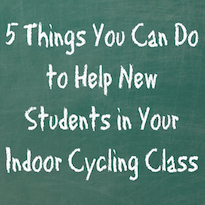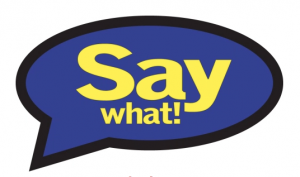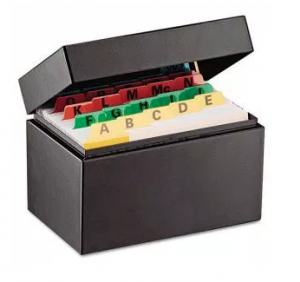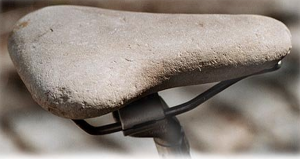Welcome to guest writer Lena Hershey. This post originally appeared on her blog at Leanlena.com.
I bet you were once a newbie student in somebody’s class. Remember that?
Most likely that instructor who taught the very first class you attended was pretty good since you decided to make teaching indoor cycling your job! Either way, I’m sure you remember the experience of taking the very first class, feeling weird and out of place with all those riders in cycling jerseys and funny shoes around you. Oh, and that soreness in the saddle area the day after (ouch!)—but I digress.
We all once were new to indoor cycling. Whether or not we came back to that class or indoor cycling in general depended a lot on the instructor of that very first class we took.
Now the roles are reversed and you’re on the other side of the room hoping you’re doing a good job and your students like your class enough to come back for more.
Here’s some more insider information for you from someone who was a newbie not so long ago and is now teaching indoor cycling.
{ONE} Have Your Radar On
Before your class begins, as people start entering the room… Keep your “radar” on. It is a great skill to be able to remember people’s faces and names, and to remember exactly if they’ve been to your class before. Not all of us have mastered it just yet—especially if the studio you teach at has 50 bikes in the room.
Do your best and try to remember new people as you meet them.
Back to that radar—it’ll help you spot the new people you haven’t seen before.
Asking if anybody’s new to cycling when you’re already on the bike and ready to start doesn’t work. Everybody knows it’s time to start. If you were new, would you say, “Yes, I’m new. Can you please help me?” in the room full of people eager to start pedaling away?
Exactly.
Do your radar screening and walking around before the class. Spot them. Come up to them and introduce yourself. Ask if they need any help. Be proactive.
Keep an eye on them during the class and get off the bike to help if you see them struggling with form, etc.
That radar is called “I CARE” and it’s a shame that many instructors have it off most of the time. If yours is on, the new riders will come back. You know, because you care.
{TWO} Warn Them in Advance and Keep it Simple
We teach every day/week. Many things we do and say in the class seem natural and obvious to us, but they are not so obvious to new students in indoor cycling.
“What in the world is rpm and how do I find it on this little computer? How do I even turn it on?”
When you spot new folks and come up to talk to them before class, after the bike setup (see, I don’t even mention that as one of the five things—it’s a MUST), go over the bike computer (if applicable) and basic terminology you use in the class (rpm, resistance, climb, flat road, etc.). You won’t have time for a lecture, but try to explain the basics briefly.
Consider changing up your cueing to “less jargon” if you have new students in that class.
Example:
Instead of: “Gimme more of that hill!”
Say: “Add resistance.”
Remember, this terminology is new to them. Keep it simple.
{THREE} Magic Box
Let’s face it, they won’t remember the bike setup numbers next time they come to your/other instructor’s class.
They will feel embarrassed to ask for help again and will set it up themselves “by the feel.” They will end up doing it wrong and hurting themselves.
Don’t let it happen—all it takes for you to help them is one trip to a store and about $10.
Buy an index card box, a couple packs of index cards, and alphabetic dividers:
After you’re done setting up the bike for them, write the settings and their name down on an index card and file under the letter their name starts with.
Now, I know they don’t show up with enough time for you to do all that before class. If you’re running out of time, mention this option to them and come back with that index card after class.
If they run out before you can get to them with that card, go over to their bike, write the numbers down, and file. Mention it to them next time they come to your class.
{FOUR} Now, About That Saddle…
I mentioned being sore from the saddle earlier in this post.
Do you remember how miserable you were after your first-ever indoor cycling class? I still do and it hurts to even think about it.
Talk to your manager and see if you can purchase a couple gel seat covers for newbies. Experienced riders come prepared (padded shorts, gel seat covers, tough rears)—new riders will not know about this “drawback” of the first class. I know a woman who never returned to cycling for that very reason.
Offer them a gel seat cover. It won’t take care of the issue 100% and they will still be sore the day after, but it will help. A LOT.
{FIVE} New Student Handout
Put together and print a handout for new students—anything they might need to know about indoor cycling for beginners. Here are some suggestions on what to include into the handout:
- the importance of proper riding form
- a column with basic terminology
- contraindicated moves
- “dress code” guidelines and what to bring to class
- hand positions and moves
- cycling class types offered at your facility (junior, senior, introduction to cycling, express, 1 hour long, etc.)
- schedule of the cycling classes your facility offers for easier reference
- quick introduction to the cycling instructors on the back (add photos and let instructors write up the introductions themselves)
- and any other information that might be specific to your facility
What you include in that handout is entirely up to you and your director, but make sure it is a fun and engaging introduction to your club’s indoor cycling/Spinning® program. You want them to come back for more!
And that’s it, my dear indoor/outdoor cyclists! 
I hope you found this post helpful. If you did, please SHARE to help more instructors make their newbies feel welcome in their classes and come back for more of the benefits that cycling has to offer.
You can find more great information on Lena’s blog here.






Great post about indoor cycling. Can you tell which one would be best for fitness indoor cycling or home gym? Thanks in advance.
As far as saddles go, spin bike seats are not comfortable and that can lead to new riders not coming back to class. While gel seat covers seem like a good idea, they do not prevent issues faced by riders because gel seats are too soft and do not provide adequate support. Padding cycling shorts are good, but you need to own multiple pairs and make sure they are clean. The other alter alternative is a new type of seat cover that uses the same high density foams used in padded cycling shorts. This is what I recommend to my students and fellow indoor cyclists. The product is called Komfy. http://www.sokomfy.com
I love spin and I’m still new! I used to spin years ago at LA fitness and it was fun. I recently got back into it and have been going to a spin studio- wow, what a difference! Both were good workouts, but I much prefer the spin studio. Besides the teachers seemed a lot more educated at the studio, I never had to show up to class early just to get a bike. You reserve your bike before you go – it just makes things easier if you belong to a super crowded gym. I also like to pay as I go since I have a gym at my office
Also for new riders, if they have a smart phone they can take a photo of their setup.
This is a good perspective, Lena. Very useful.
Hello Lena,
Your tips are really worth reading. And from my experience I can say that every newbie to indoor cycling should not these suggestions for them before start their indoor cycling class. And I found your MagicBox tricks totally innovative. Keep inspiring and keep going. Cheers!